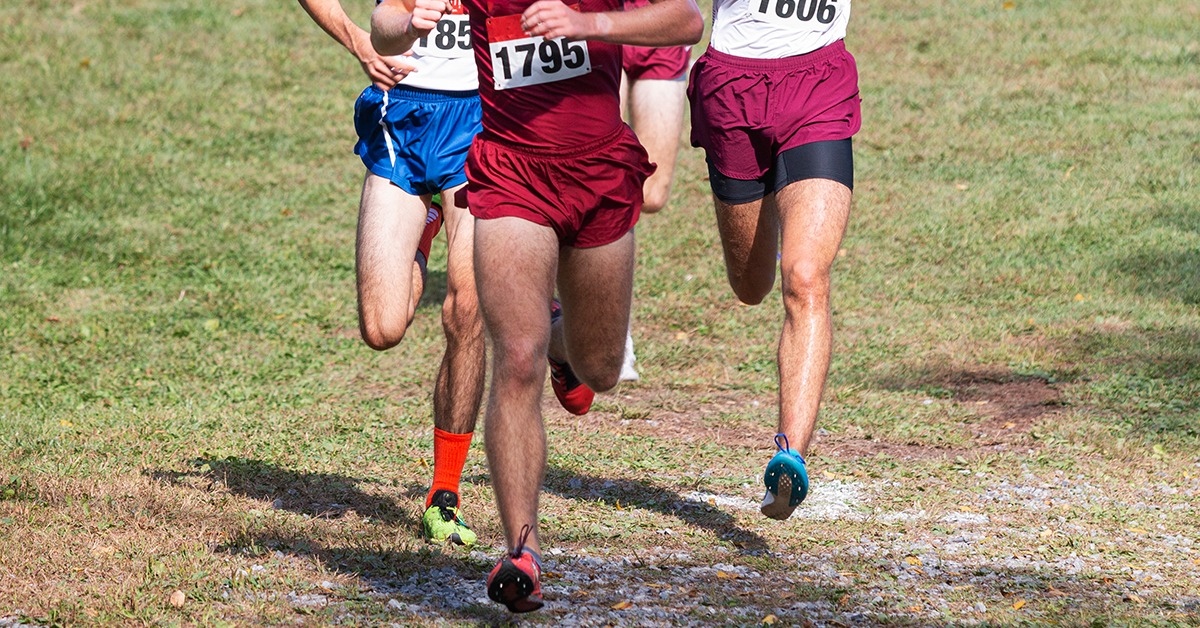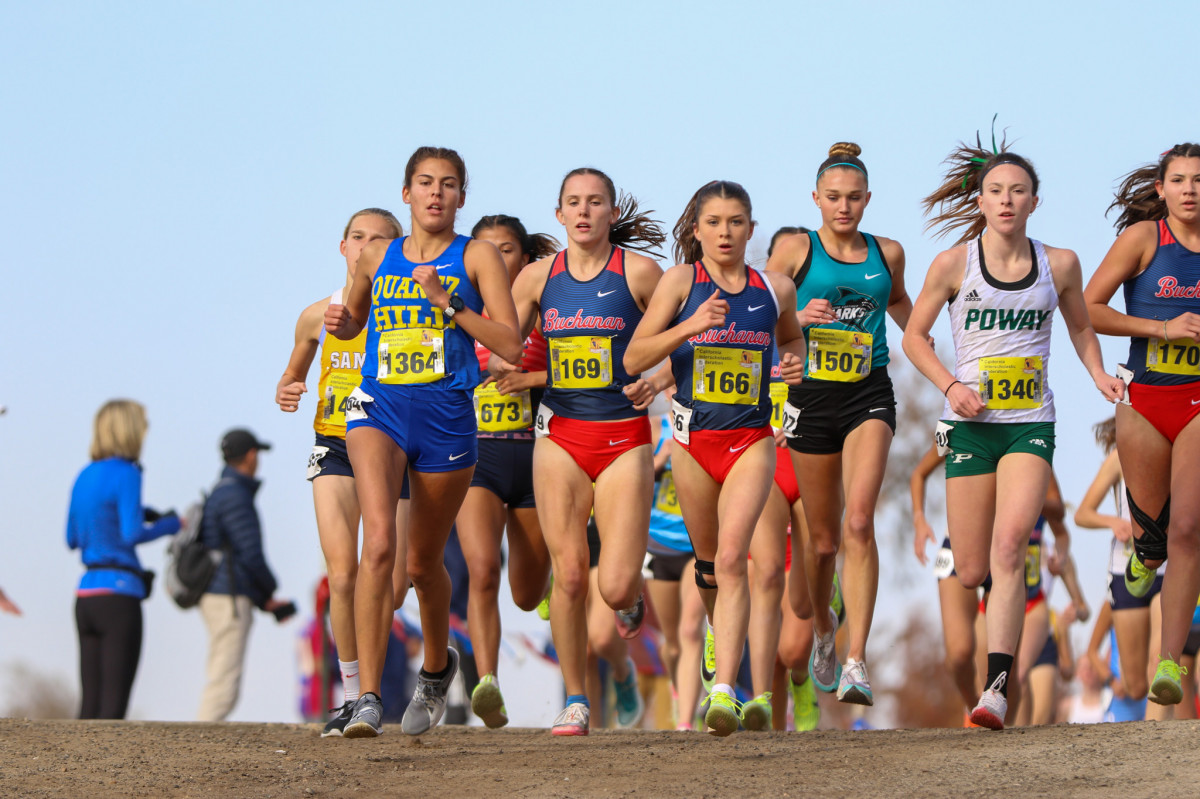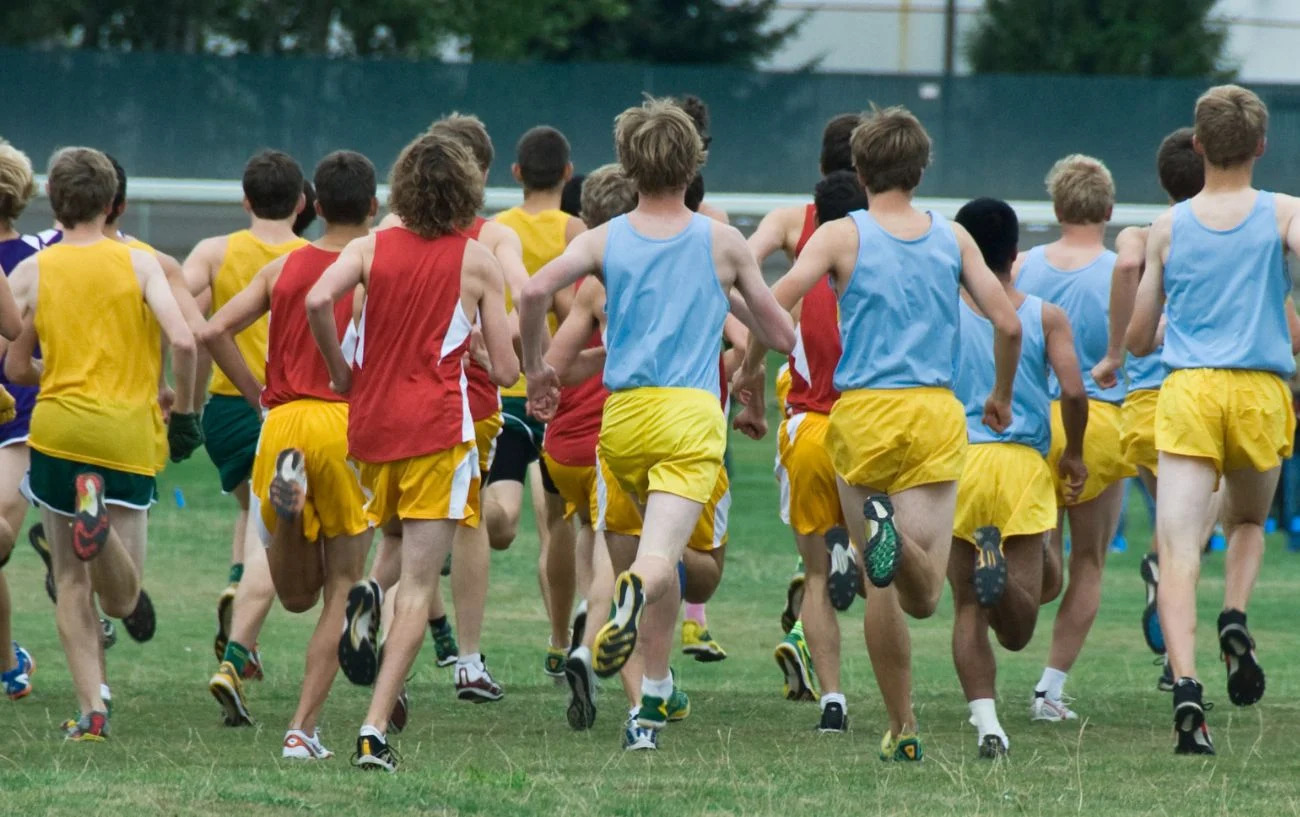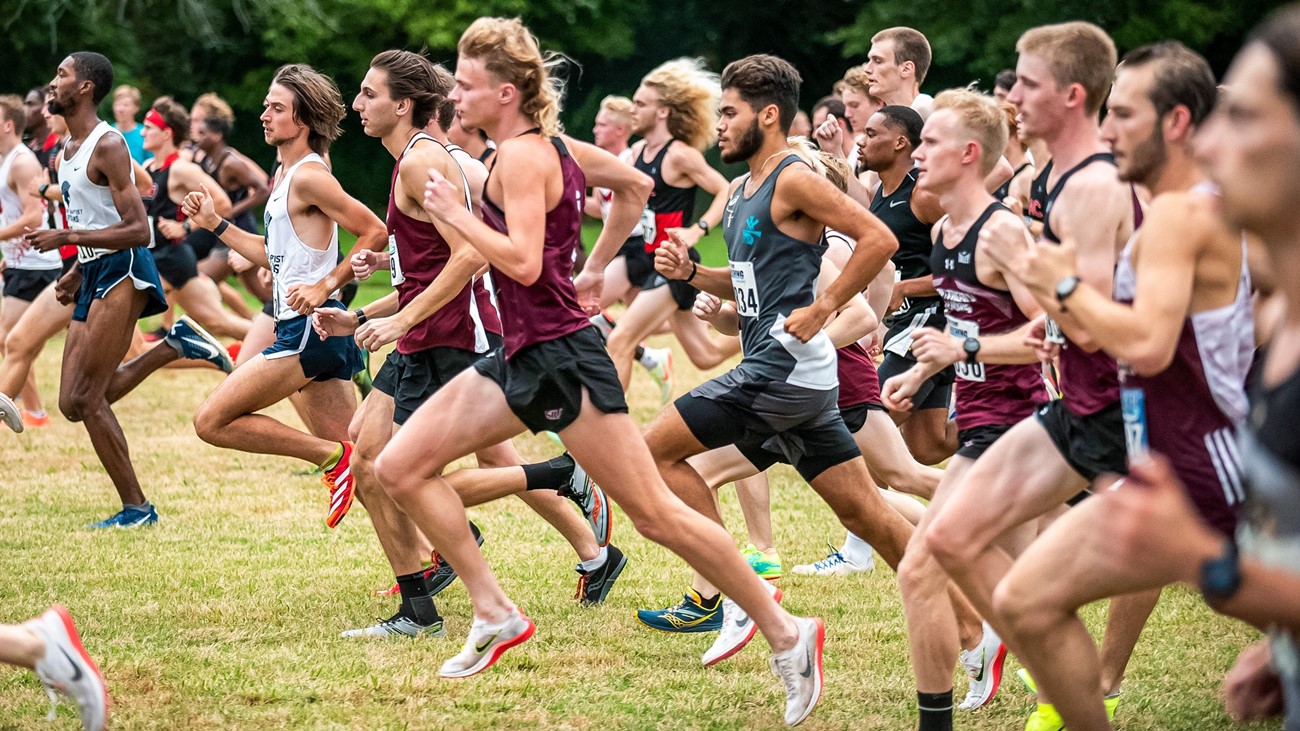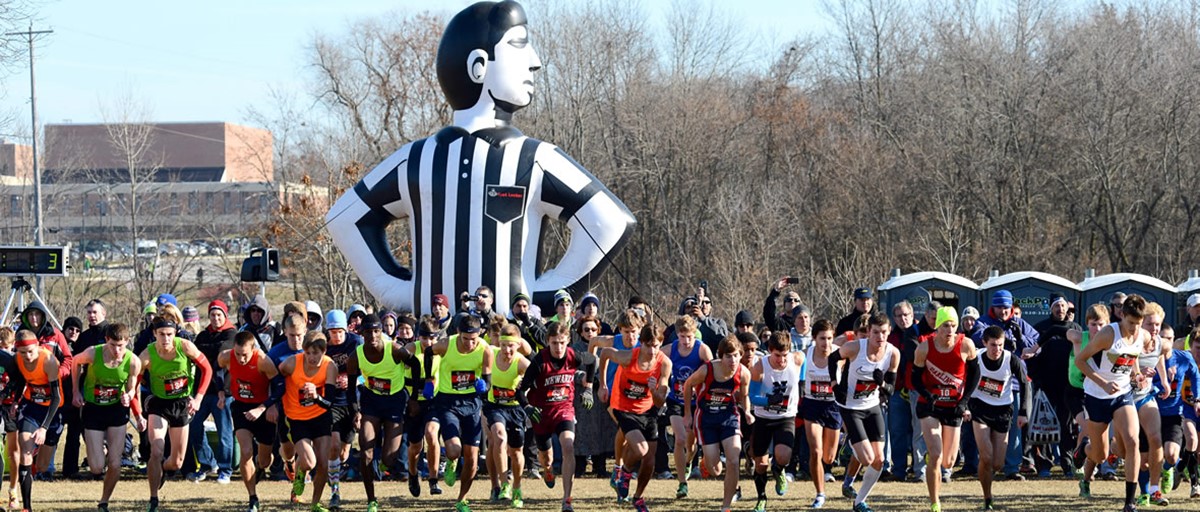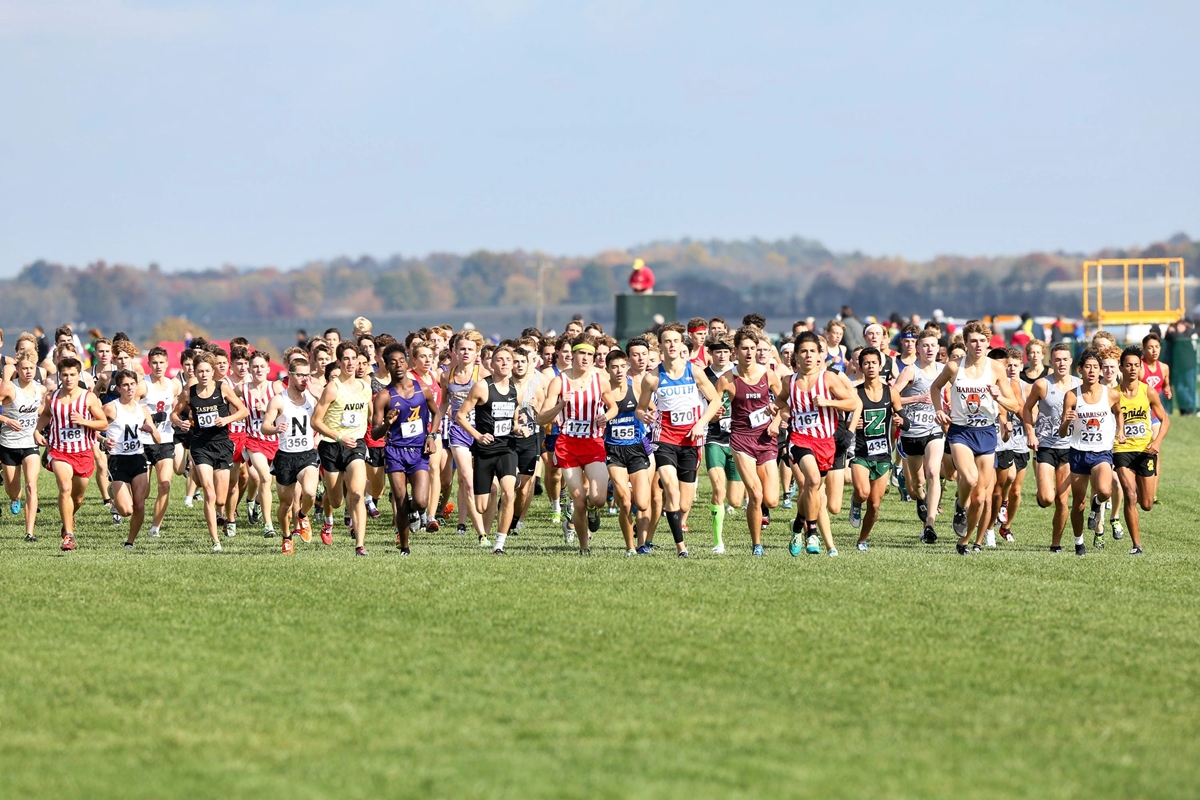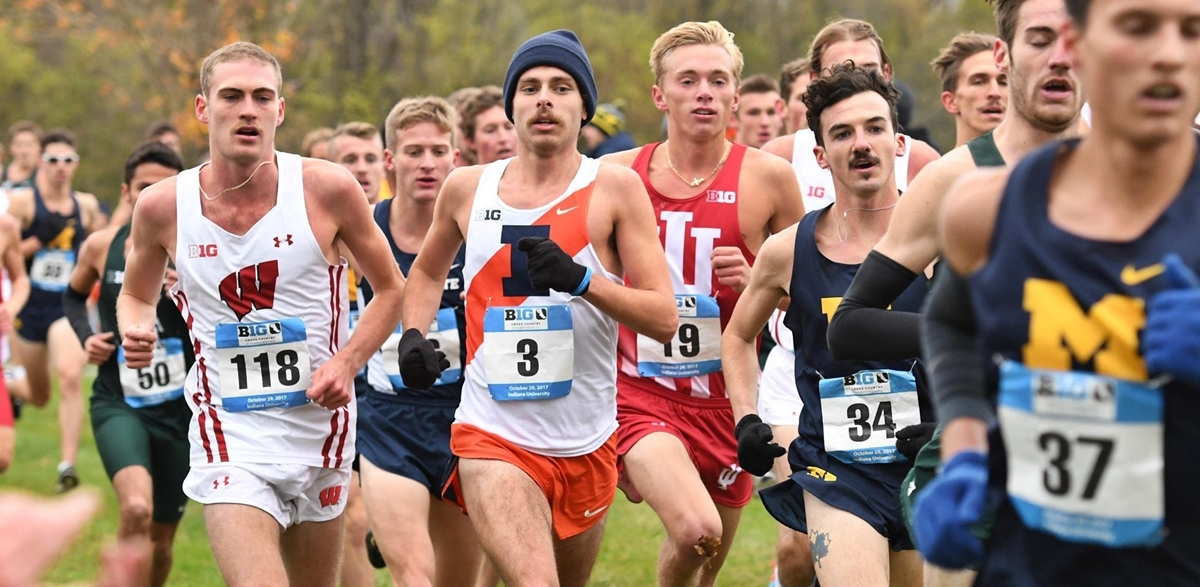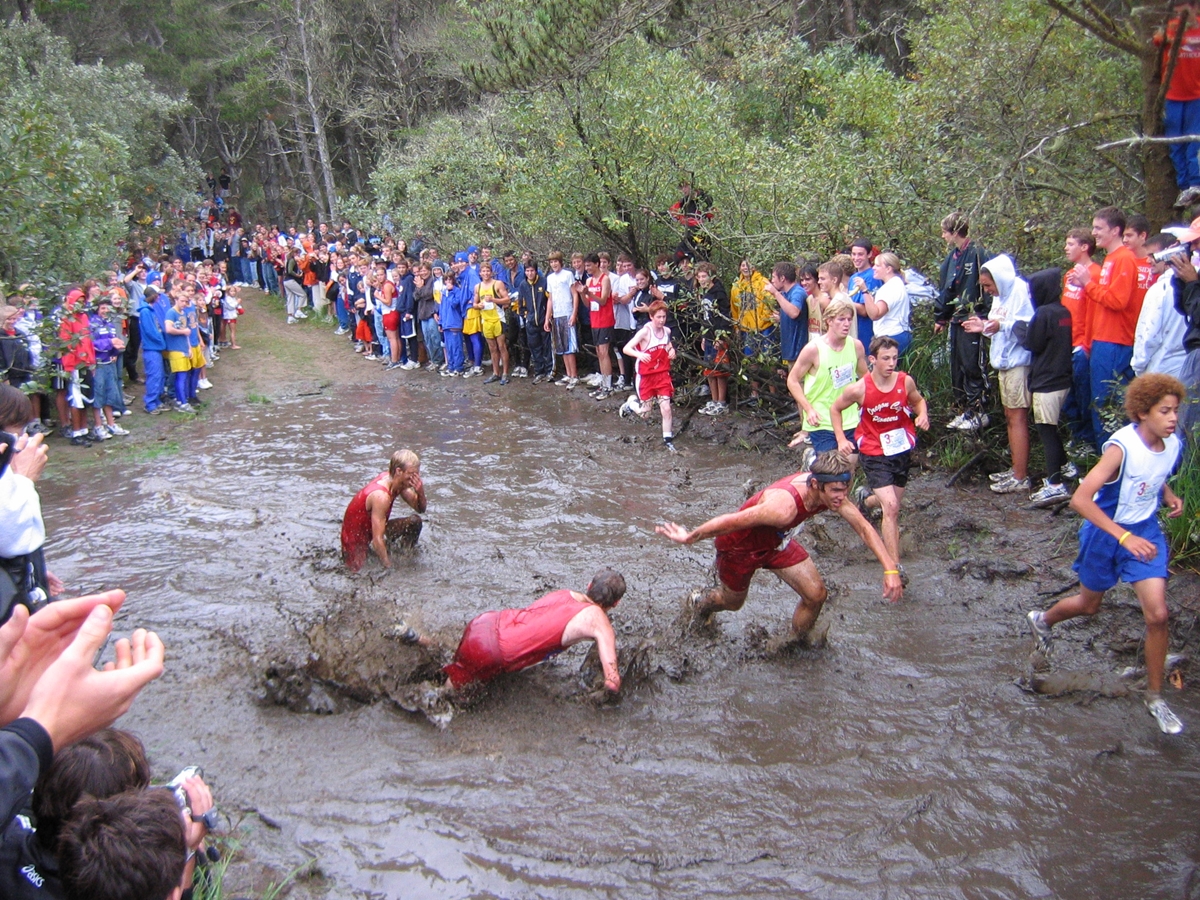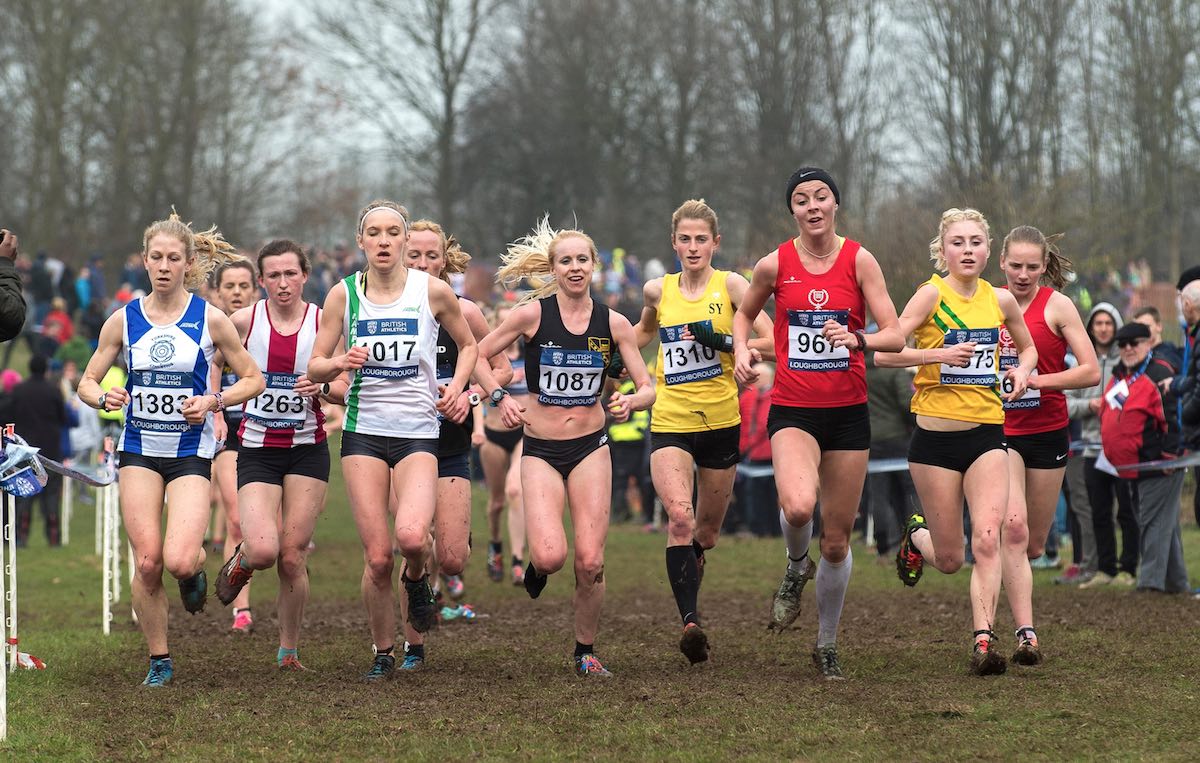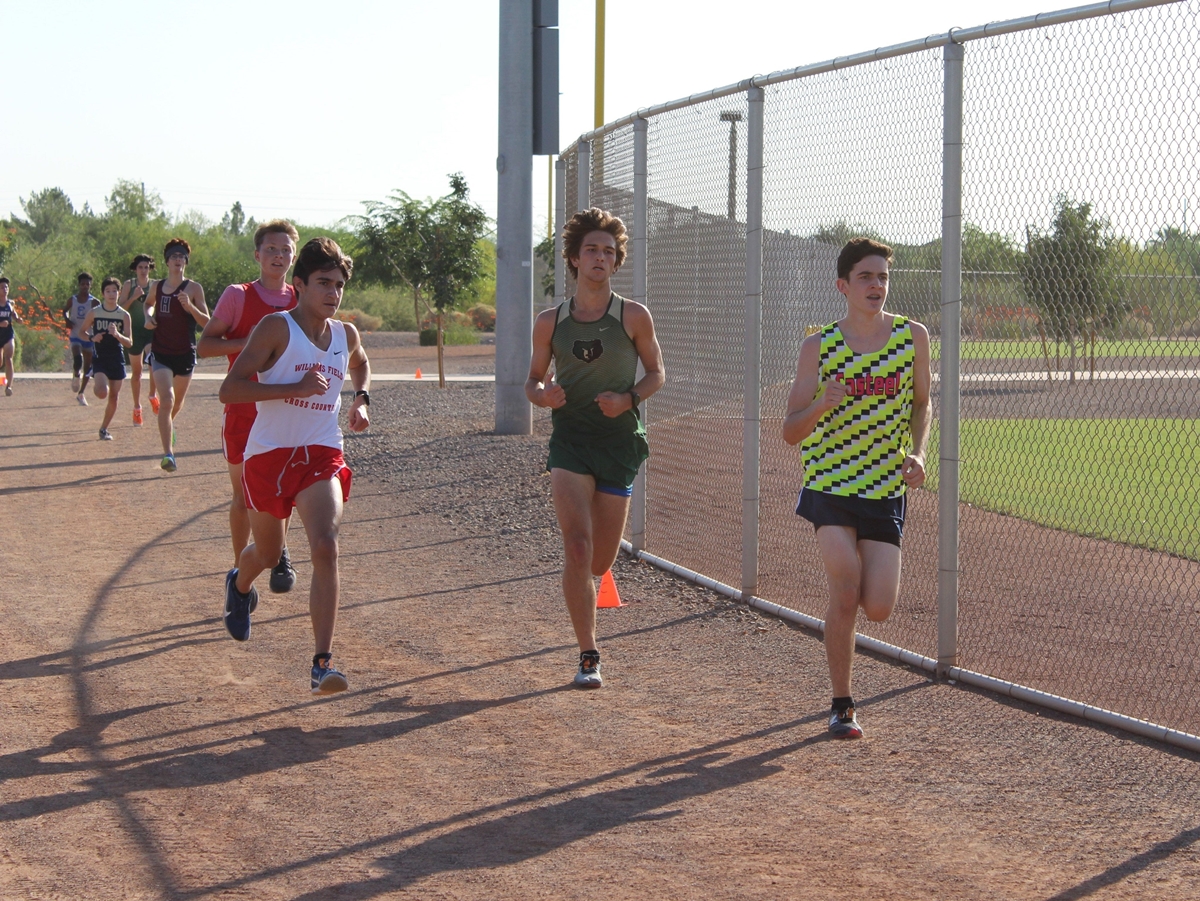

Featured
What Is High School Cross Country Events
Modified: January 22, 2024
Discover the excitement of high school cross country events in this informative article. Learn about the featured races, training techniques, and the benefits of participating in this popular sport.
Introduction
Cross country running is a popular sport in high schools across the country. It combines athleticism, endurance, and teamwork to create a challenging and rewarding experience for student-athletes. In this article, we will explore the world of high school cross country events, from its history and basics to the training and preparation required for success.
Historically, cross country running has its roots in the sport of steeplechase, dating back to the early 19th century in England. It was initially developed as a means for military personnel to train and improve their endurance. Over time, cross country running gained popularity as a competitive sport, eventually making its way to high schools and colleges around the world.
In high school cross country events, teams of athletes compete on a designated course, typically set in a park, golf course, or other natural terrain. The courses often vary in distance and terrain, providing a challenging and unpredictable race for participants.
Scoring in high school cross country is based on both individual and team performance. Individual athletes aim to complete the course in the fastest time possible, while teams strive to score the lowest number of points by having their top runners place well. This combination of individual and team scoring adds an element of camaraderie and strategy to the sport.
Preparing for high school cross country requires a combination of physical fitness and mental resilience. Athletes engage in a rigorous training regimen that includes running workouts, strength training, and proper nutrition. They also develop strategies for tackling different types of terrains and varying weather conditions.
Participating in high school cross country offers numerous benefits. It promotes physical fitness, mental toughness, and discipline. It also fosters a sense of teamwork, as athletes work together to achieve their goals. However, it also comes with challenges, such as facing tough competition and dealing with the demands of training and balancing academics.
Throughout this article, we will delve deeper into the various aspects of high school cross country events, providing insights and guidance for those who are curious about the sport or considering participating in it. By gaining a better understanding of cross country running, athletes can better prepare themselves for the challenges and enjoy the experience to the fullest.
History of Cross Country Running
The origins of cross country running can be traced back to the sport of steeplechase in the early 19th century. Steeplechase, a horse racing event, involved racing between church steeples, hence the name. It soon evolved into a sport for military officers to test their endurance and stamina.
In the mid-19th century, cross country running emerged as a sport in its own right. It became popular among English public schools and colleges, with the first recorded cross country race taking place in 1837 between two schools in Yorkshire.
By the early 20th century, cross country running had gained traction internationally, with various countries organizing races and adding their own unique elements to the sport. The International Cross Country Union, now known as World Athletics, was established in 1903 to govern and regulate cross country running on a global scale.
In the United States, the sport began to gain recognition in the early 20th century, primarily through collegiate competitions. The inaugural National Collegiate Athletic Association (NCAA) Cross Country Championship was held in 1938, paving the way for the growth of the sport at the collegiate level.
High school cross country also developed during this time, with the first officially recognized state championship meet for high school athletes taking place in Illinois in 1946. The sport rapidly gained popularity, and today, high school cross country is a staple of athletic programs nationwide.
Over the years, cross country courses have evolved to incorporate various terrains, ranging from grassy fields and trails to wooded areas and even snow-covered landscapes. This diversity in terrain adds a challenging and exciting element to the sport, requiring athletes to adapt their strategies and techniques accordingly.
The sport has also seen advancements in training methods and technology. Athletes now have access to specialized running shoes, GPS tracking devices, and advanced workout plans to help them enhance their performance and prevent injuries.
In recent years, cross country running has gained popularity beyond the competitive sphere, with recreational runners embracing the sport for its physical and mental health benefits. Many cities and communities host cross country races and fun runs, providing opportunities for people of all ages and abilities to experience the thrill of running through natural landscapes.
As cross country running continues to evolve and grow, its rich history and traditions will remain an integral part of the sport. Whether as a competitive athlete or a recreational runner, participating in cross country allows individuals to connect with the sport’s roots while challenging themselves both physically and mentally.
Basics of High School Cross Country Events
High school cross country events are exhilarating and physically demanding competitions that showcase the endurance and determination of student-athletes. Understanding the basics of these events is crucial for both participants and spectators.
A typical high school cross country race is held on a designated course that spans natural terrain such as parks, golf courses, or wooded areas. The distance of the race can vary between 2 to 5 miles (3.2 to 8 kilometers), depending on the level of competition and the specific race category.
Unlike track and field events that take place on a flat oval track, cross country races are renowned for their challenging terrain. Runners encounter hills, inclines, uneven surfaces, and obstacles, making it a true test of their physical and mental abilities.
During a race, athletes strive for their personal best times while also competing as part of a team. The top few finishers earn points for their team based on their placement, with the lowest overall team score determining the winner.
Participants start the race in a mass start format, where all athletes begin together. It is not uncommon for the field of runners to be quite large, with sometimes hundreds of competitors vying for position.
Throughout the race, athletes must pace themselves to maintain their stamina and avoid early exhaustion. They strategically position themselves to navigate the course efficiently, finding the best path and using momentum to push through challenging terrain.
High school cross country races can be competitive and intense, with athletes pushing themselves to their limits. The atmosphere is often filled with anticipation and excitement as spectators cheer on the runners, providing encouragement and motivation.
At the finish line, times are recorded for each individual athlete. These times not only determine the individual rankings but also contribute to the overall team score. The team with the lowest cumulative score is declared the winner.
One of the unique aspects of high school cross country events is the camaraderie and sportsmanship that is fostered among the athletes. Despite being individual sports, cross country competitions often have a strong team dynamic, with runners encouraging and supporting one another throughout the race.
Participating in high school cross country events not only builds physical strength and endurance but also teaches valuable life skills. Athletes learn the importance of discipline, perseverance, and goal-setting as they strive to improve their performance and contribute to the success of their team.
As high school cross country events continue to grow in popularity, they provide an exciting platform for young athletes to showcase their skills, push their limits, and develop a lifelong love for running.
Distances and Course Terrain
High school cross country races offer a variety of distances and course terrains, providing unique challenges for student-athletes. Understanding the different distances and course types is essential for participants to effectively prepare and strategize for each race.
The distance of a high school cross country race can vary based on the level of competition and the race category. Typically, races range from 2 to 5 miles (3.2 to 8 kilometers). The shorter distances are often designated for freshman and junior varsity races, while varsity races tend to cover longer distances.
Cross country courses can feature a wide range of terrains, each with its own set of challenges for runners. Common terrain types include:
- Grass: Grass terrain is the most common and straightforward type of cross country course. Runners traverse lush fields, parks, or meadows, often encountering both flat stretches and hilly sections. This type of terrain requires good traction and the ability to maintain a steady pace.
- Trails: Trails courses take runners through scenic wooded areas or nature trails. These courses can be challenging due to uneven surfaces, roots, rocks, and tight turns. Trail running requires agility, balance, and the ability to quickly adapt to changes in footing.
- Hills: Some cross country courses incorporate significant elevation changes, including hills or inclines. Uphill sections test the runner’s strength and endurance, while downhill sections challenge their agility and control. Hill training is essential for athletes preparing for races with significant elevation changes.
- Obstacles: Certain cross country events may include man-made or natural obstacles, such as hay bales, water crossings, or log jumps. These obstacles add an extra element of excitement and strategy to the race, requiring athletes to quickly assess and navigate the challenges while maintaining their pace.
- Mud: Wet, muddy terrain presents its own unique set of challenges for cross country runners. Muddy courses can slow down athletes and make it difficult to maintain traction and stride. Endurance and mental toughness are crucial in overcoming the obstacles posed by muddy terrain.
The combination of varying terrain types within a single race not only tests an athlete’s speed but also their ability to adapt to different surfaces and conditions. Runners must develop specific strategies for each terrain type and adjust their pacing and technique accordingly.
Understanding the distances and course terrain is vital for athletes to tailor their training and race strategy. Training should include specific workouts targeting the demands of the course, such as hill repeats, trail runs, and practice on different surfaces.
By familiarizing themselves with the expected terrain and distances, high school cross country athletes can effectively plan their training, develop appropriate race strategies, and maximize their performance in each race.
Scoring and Team Competitions
Scoring and team competitions are integral components of high school cross country, adding an extra layer of excitement and camaraderie to the sport. Understanding how scoring works and the dynamics of team competitions is crucial for both athletes and spectators.
In high school cross country, scoring is typically based on both individual and team performance. Individual athletes aim to achieve the fastest time possible, striving to place as high as they can among the total number of competitors.
The team aspect of cross country arises from the fact that each team is made up of multiple athletes, often the top seven runners. The goal is for the team to score the lowest number of points collectively. Points are assigned based on an athlete’s placement within the race, with lower placement resulting in fewer points.
For example, if a race has 100 participants, the first-place finisher would score 1 point for their team. The second-place finisher would score 2 points, the third-place finisher would score 3 points, and so on. The points for the top seven finishers on each team are then added together, and the team with the lowest total score wins.
This team-based scoring system encourages a cooperative and supportive environment among athletes. Even if an individual runner does not finish among the top competitors, their performance still contributes to the overall team score.
Team competitions in cross country often involve multiple schools facing off against each other. These races can be invitational meets, dual meets between two schools, or championship races that bring together teams from various regions.
At larger events, teams are often grouped into divisions based on school size or competitive level. This allows for fair competition and ensures that teams are pitted against opponents of similar capabilities.
In team competitions, schools aim to have a strong top group of runners who can consistently finish high in the standings. Building a solid team involves recruiting and developing talented athletes and fostering a culture of hard work and dedication within the cross country program.
The team dynamic in cross country is different from other sports as the athletes’ performances significantly impact the team’s success. This fosters a sense of camaraderie and teamwork among team members, who often train together, support each other during races, and celebrate both individual and team achievements.
Team competitions also offer opportunities for athletes who may not be the fastest individuals but contribute to the team’s overall success. A strong team culture often recognizes and appreciates the efforts of every athlete, regardless of their placement, highlighting the importance of unity and support within the cross country community.
Understanding scoring and team competitions in high school cross country adds depth and excitement to the sport. It allows athletes and spectators alike to appreciate the collective efforts and achievements of the teams as they compete and strive for victory.
Training and Preparation for High School Cross Country
Training and preparation are key components of success in high school cross country. Athletes must develop proper running techniques, endurance, and mental resilience to compete at their best. Understanding the training methods and strategies used by cross country runners is vital for aspiring student-athletes.
The foundation of cross country training lies in building a strong aerobic base. This involves long-distance runs at a moderate pace to improve cardiovascular fitness and endurance. These runs gradually increase in duration and intensity over time, allowing the body to adapt and become more efficient.
Interval training is another critical aspect of cross country preparation. Athletes incorporate shorter, faster-paced runs or sprints with rest intervals in between to improve speed and anaerobic capacity. These intervals can vary in duration and intensity, focusing on developing both speed and endurance.
Hill training is crucial for cross country runners as it helps build leg strength and improves technique for handling inclines during races. Athletes often incorporate hill repeats and hill sprints into their training routine to prepare for challenging course terrains.
In addition to running, cross training plays a significant role in overall fitness and injury prevention. Activities such as cycling, swimming, and strength training help develop different muscle groups, improve overall strength, and provide a break from the repetitive stress of running.
Nutrition is another key aspect of cross country training. Athletes need to fuel their bodies properly to support their training and recovery. A well-balanced diet rich in carbohydrates, lean proteins, and healthy fats ensures optimal performance and aids in muscle recovery.
Mental preparation is equally important as physical training in cross country. Athletes must develop mental resilience to push through fatigue and overcome challenging moments during races. Techniques such as visualization, positive self-talk, and goal setting help athletes maintain focus and stay motivated.
Proper rest and recovery are essential to prevent injury and allow the body to adapt to the demands of training. Adequate sleep, stretching, foam rolling, and taking regular rest days are vital for maintaining overall health and performance.
Joining a cross country team or seeking guidance from coaches and experienced runners can provide valuable insights and support. Coaches provide training plans, guidance on technique, and create a supportive team environment that fosters growth and improvement.
It’s important for athletes to listen to their bodies and adjust their training accordingly. Paying attention to signs of fatigue, soreness, or injury allows athletes to make necessary modifications to their training plan to prevent overexertion and avoid injuries.
In summary, training and preparation for high school cross country require a combination of physical and mental conditioning. By developing a well-rounded training regimen, paying attention to nutrition and rest, and seeking guidance from experienced individuals, athletes can maximize their potential and achieve success on the cross country course.
Benefits and Challenges of Participating in High School Cross Country
Participating in high school cross country offers numerous benefits and presents certain challenges for student-athletes. Understanding these aspects can help individuals make informed decisions about joining a cross country team and provide insight into the unique experiences that come with the sport.
One of the key benefits of participating in high school cross country is improved physical fitness. Cross country running is a demanding sport that builds cardiovascular endurance, muscular strength, and overall stamina. Regular training and participation in races lead to improved cardiovascular health, increased lung capacity, and enhanced overall fitness levels.
Cross country also fosters mental toughness and resilience. Athletes learn to push through physical discomfort and emotional challenges, developing mental strength that extends beyond the racecourse. The ability to overcome these hurdles can have a positive impact on other areas of life, such as academics and personal goals.
Another benefit of cross country is the sense of camaraderie and teamwork developed among teammates. Cross country teams often have a tight-knit community, where athletes support and motivate each other both on and off the course. This supportive environment creates lasting friendships and builds strong bonds among teammates.
Participating in cross country also provides an opportunity for personal growth and self-discovery. Athletes learn to set goals, work hard, and persevere through challenging moments. They develop a strong work ethic and discipline as they commit to a training schedule and balance their athletic endeavors with academics and other responsibilities.
However, participating in high school cross country also comes with its challenges. The sport requires significant time commitment, with athletes often engaging in daily training sessions and regular competitions. Balancing the rigorous training schedule with academic demands can be challenging and requires effective time management skills.
The physically demanding nature of cross country can also lead to injuries. Athletes may experience issues such as shin splints, stress fractures, or muscle strains. Proper training techniques, appropriate rest, and seeking guidance from coaches can help minimize the risk of injuries and ensure a safe training experience.
Competing in cross country events can be mentally challenging. Athletes must cope with race-day nerves, manage expectations, and deal with the ups and downs of performance. Developing mental resilience and positive coping strategies are essential for navigating these challenges and optimizing performance.
Tough competition is another challenge in high school cross country. Races often attract a large pool of talented athletes, and the course terrain and weather conditions can present additional obstacles. Overcoming these challenges requires dedicated training, mental preparedness, and a competitive mindset.
Despite the challenges, the benefits of participating in high school cross country far outweigh the drawbacks. Improved fitness, mental toughness, camaraderie, and personal growth make the experience rewarding and worthwhile for student-athletes who embrace the sport.
By recognizing both the benefits and challenges, individuals can make an informed decision about participating in high school cross country and approach the sport with a mindset of growth, resilience, and enjoyment.
Frequently Asked Questions (FAQs)
1. What is the minimum age requirement to participate in high school cross country?
The minimum age requirement to participate in high school cross country may vary by state or school district. Typically, students in grades 9-12 are eligible to compete. It is best to check with your school’s athletic department for specific age and grade requirements.
2. Do I need prior running experience to join a high school cross country team?
No prior running experience is required to join a high school cross country team. Many athletes start cross country in high school without having participated in the sport before. Coaches are usually experienced in working with athletes of all skill levels and will provide guidance and training tailored to individual abilities.
3. How often do high school cross country teams have practices and competitions?
High school cross country teams typically have regular practices throughout the week, ranging from five to six days. Practices may include a combination of distance running, speed workouts, strength training, and cross training. Competitions are usually held on weekends and can vary in frequency, with some teams participating in weekly meets.
4. Can I participate in other sports while doing cross country?
Many student-athletes participate in cross country alongside other sports. However, it is important to consider the time commitments and potential overlap of seasons. Communicate with coaches from both sports to discuss scheduling and commitments to ensure a feasible arrangement.
5. Do I need specialized equipment for cross country?
While cross country does not require extensive equipment, there are a few essentials. Proper running shoes that offer support and comfort are critical. Other items may include moisture-wicking clothing, a stopwatch or running watch, and spikes for enhanced traction on muddy or soft surfaces.
6. How can I improve my endurance and speed for cross country?
To improve endurance, focus on consistent aerobic training by gradually increasing your mileage and incorporating long runs into your routine. Interval training, hill repeats, and tempo runs can help improve speed and anaerobic capacity. Work closely with your coach to develop a training plan that suits your goals and abilities.
7. Is cross country only for competitive runners?
No, cross country is open to athletes of all abilities and interests. While some participants may be highly competitive, others may join for fitness, personal growth, or social reasons. The sport welcomes individuals who are committed to challenging themselves, improving their fitness, and being part of a supportive team environment.
8. What are the benefits of cross country beyond high school?
Participating in high school cross country can provide a foundation for continued running and fitness beyond high school. Many athletes go on to compete at the collegiate level or participate in recreational running events such as marathons and charity races. The discipline, mental toughness, and skills developed through cross country are valuable for personal fitness and overall well-being.
9. Can cross country help with college admissions?
Participating in high school cross country can positively impact the college admissions process. Admissions officers recognize the commitment and dedication required to compete in a sport like cross country. It demonstrates discipline, time management skills, teamwork, and an ability to take on challenges. Additionally, being part of a team and any leadership roles within it can highlight your ability to contribute to a college community.
10. How can I find a cross country team to join if my school doesn’t have one?
If your school does not have a cross country team, consider reaching out to nearby schools or running clubs in your community. They may offer opportunities for individuals from other schools to join their team. Running clubs may also host local races or training groups that provide a supportive and competitive environment for aspiring cross country runners.
Conclusion
High school cross country is a unique and challenging sport that offers a multitude of benefits for student-athletes. Whether you are considering joining a team or simply curious about the sport, understanding the history, basics, and training involved in cross country can provide valuable insights into this exhilarating athletic endeavor.
Cross country running has a rich history, originating from the sport of steeplechase in the 19th century and evolving into a competitive and popular event in high schools around the world. The sport combines endurance, mental resilience, and teamwork, providing athletes with a well-rounded and fulfilling experience.
High school cross country events encompass a variety of distances and course terrains, testing athletes’ physical and mental capabilities. Grass, trails, hills, and obstacles challenge runners to adapt their techniques and strategies to conquer different courses.
Scoring and team competitions add excitement and camaraderie to the sport. Individual performances contribute to the overall team score, fostering a sense of teamwork and support among teammates. Through preparation, dedication, and a strong work ethic, athletes can maximize their potential and achieve success in this team-driven sport.
Participating in high school cross country offers numerous benefits, such as improved physical fitness, mental toughness, camaraderie, and personal growth. It builds resilience, discipline, and goal-setting skills that extend beyond the racecourse and into other areas of life.
However, cross country also comes with its challenges. Balancing training commitments with academics, managing injuries, and dealing with tough competition require determination and effective time management. By recognizing and overcoming these challenges, athletes develop the skills to thrive not only in running but also in life.
Ultimately, high school cross country is a sport that provides an inclusive and supportive community for student-athletes of all abilities. Whether you’re chasing personal records or seeking personal growth, the lessons learned and memories made through this sport will last a lifetime.
So, lace up your running shoes, embrace the challenges, and embark on this exciting journey of high school cross country. Your endurance will be tested, your spirit will be strengthened, and the bonds forged with teammates will create unforgettable experiences on and off the course.
